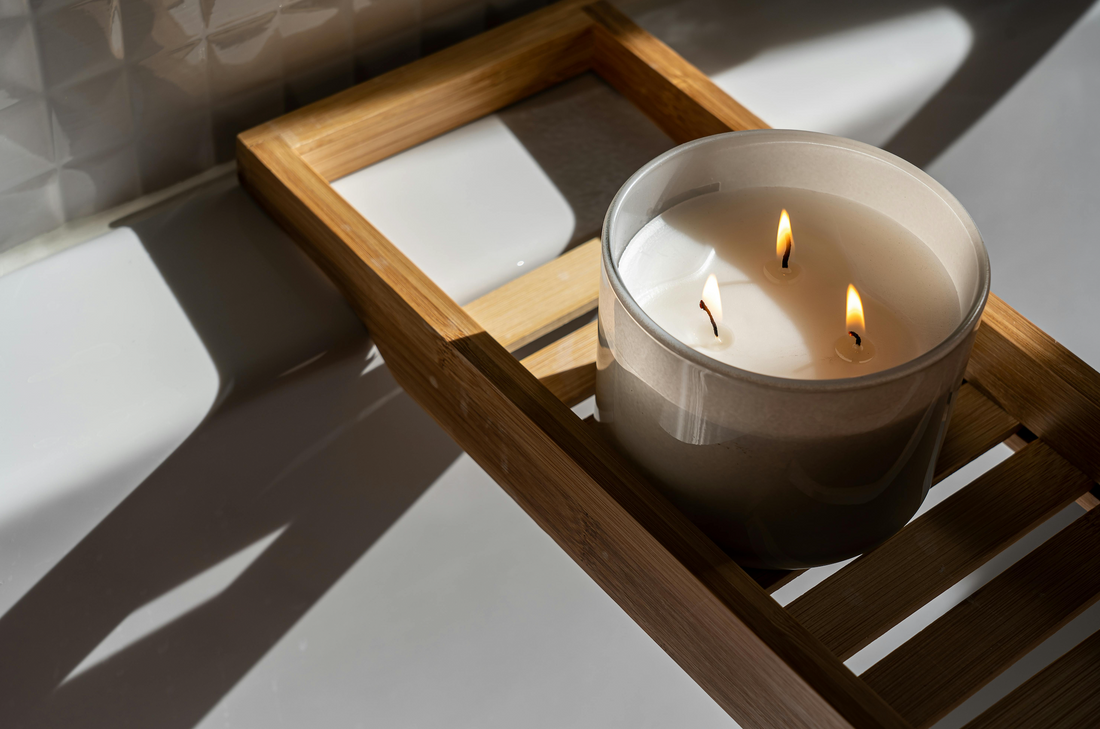
Are Candles Bad For You?
Scented candles are one of the easiest ways to enhance your home. But, is it possible that our favourite home craze is potentially hurting us? Are candles bad for you and your health? Well to begin there are a couple key factors that we need to look at.
- Wicks (Wooden VS Cotton)
- Wax (Natural VS Paraffin)
- Fragrances (Natural VS Synthetic)
Wicks
One of the biggest misconceptions of candle wicks are that they contain lead. That statement is not 100% false, because 10 years ago they did. In 2003 lead wicks were banned in Canada due to health regulations. High lead exposure can cause many serious health problems such as; anemia, hormone disruption and brain/ kidney damage.
Unless you have candles from over a decade ago you should be safe. There are a couple ways to check to see if you still have lead wicks.
- When candle shopping always look for a “lead free” label!
- Look in the middle of the wick to see if you can see a small metal core.
- Rub a blank piece of white paper on your wick. If there is a grey smudge, throw your candle out, or go back to the store and return it!
Wooden wicks VS cotton wicks
If you are going to purchase a candle that has the typical cotton wick, it could be beneficial to look for a candle with 100% natural wax! The cotton wick will naturally have more soot burning then a wooden wick. Wooden wicks typically burn with less soot, and are more of a slower burn.
Like I said, you should be safe with the wicks unless you have a candle that's over a decade old.
Always keep in mind that breathing in too much of any smoke is bad. So always make sure to follow candle safety protocols such as keeping your candle in a well ventilated area and always keeping your wick trimmed to 1/4 inch.
Soy wax VS paraffin wax
As mentioned above, it is important to look for candles that are 100% natural wax. This is because they are free of toxic and harmful chemicals. However, different waxes are used for different projects. If you're looking at purchasing pillar candles, you will be looking at paraffin waxes because they're more sturdy and typically made for decoration. If you are looking to buy a jar candle, look for natural waxes such as;
- Soy wax
- Beeswax
- Coconut wax
- Palm wax
- Vegetable wax
If you’re purchasing a candle made with paraffin wax you’re not free from toxic chemicals.
Paraffin wax is made from petroleum, which is a by-product for making gasoline. In 2009 a study from SC State University was found that burning paraffin wax releases potentially dangerous chemicals, such as toluene which releases carcinogenic soot when burned. However the National Candle Association raised questions about the study’s reliability and said their wasn’t enough evidence to move forward.
Soy wax and beeswax can be 5 times more expensive than paraffin wax. This is where price differences come into play with candles.
Which leads to me say this, large corporations such as B&B use a 50/50 ratio blend. They use 50% soy and 50% paraffin wax. They do this to cut costs but are still legally allowed to market them as soy wax candles.
I myself was a huge B&B fan! I mean how could you not be? They have every scent you could imagine! However when I started my research for my brand and I saw what they were doing to cut costs I surely asked myself, are candles bad for me? So next time you’re searching for some candles, be sure to look for the 100% soy wax label!
Fragrances
The added scents are probably the most important ingredient when it comes to your health with candles.
As if the 50/50 ratio wasn’t bad enough, big corporations do not use natural fragrance oils. They use synthetic oils which release microscopic particles that can cause cancer and other health problems. When looking for candles always look for a Phthalate Free and Paraben Free on their descriptions. “Natural fragrance” does not equal Phthalate Free and Paraben Free!
So, are candles bad for me? Well I wouldn’t be too worried about it. Candles have been around since the 10th century BCE! I think we can all agree we’ve come a long way since then. Quality candles may cost you more than a $17.00 B&B candle. Make sure to read the labels properly, and to help support small businesses who own their craft in candle making.
For an extra little bonus, visit ![]() for some coupon codes towards our candles!
for some coupon codes towards our candles!
Happy candle hunting!
-K
